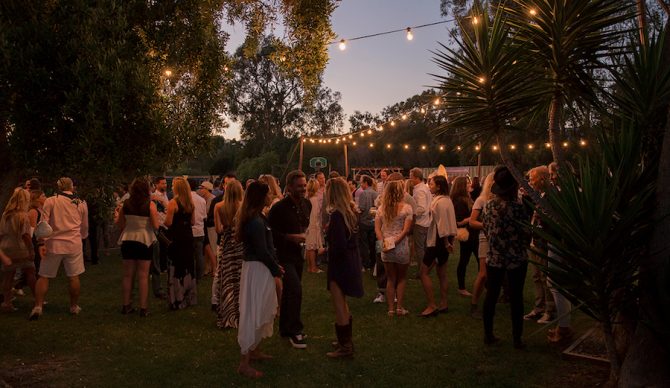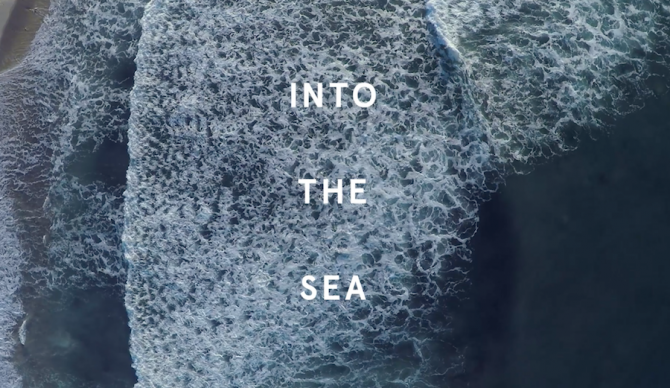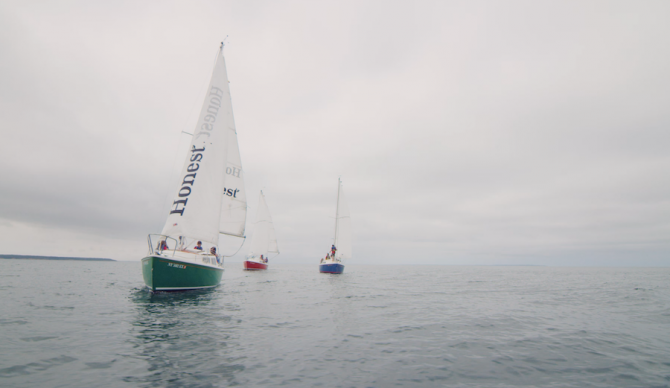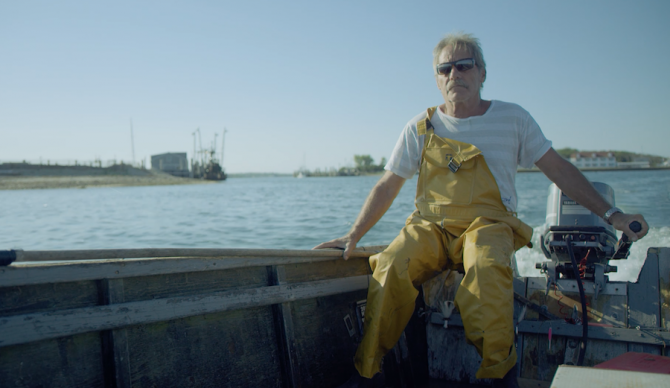
The crowd from last year’s Malibu event getting loose. Photo: Eric Herbranson
On Saturday August 13, about 100 people gathered in Montauk, New York for an intimate evening of entertainment and libations, all for a worthy cause: the protection of our coastline. Two Coasts: One Ocean is an annual event put on by the Surfrider Foundation to celebrate the work that Surfrider chapters across the nation have accomplished, raise funds to continue these efforts, and drum up awareness of the environmental issues at hand that threaten the sanctity of coastal waters. As the name implies, the event is not one but two, one on the east coast and one on the west – which will take place in Malibu on September 17.
This year’s event in Montauk was marked by the premier of a Surfrider-commissioned film called Into the Sea, produced by professional surfer, photographer, and filmmaker Mikey DeTemple.

Isn’t the ocean pretty? Yes. Don’t you want to protect her? Yes. Photo: Surfrider
Here’s what Surfrider CEO, Chad Nelsen, had to say about the New York event:
1. Can you briefly explain the history of Two Coasts One Ocean? What are the origins of the event as it relates to Surfrider’s goals?
Last year, the Surfrider Foundation held the first Two Coasts: One Ocean event in Montauk and Malibu raising vital support for Surfrider’s national work to protect our ocean, waves and beaches on around the country. Our vision is to protect 100% of the coasts through a fully supported and robust chapter network. To achieve that aggressive goal we must attract new supporters, find ways to connect with a large audience and raise additional funds. Two Coasts: One Ocean is designed to help with all of that.
2. So the event is happening this year in Montauk and later in Malibu. What’s the significance of each town to the Surfrider Foundation, in other words, why there?
Surfrider waged its first campaign in Malibu, thus makes it a natural place to celebrate our beginning. Montauk is home to our Eastern Long Island chapter who has been very active in addressing two key coastal issues facing the area: water pollution and coastal erosion. Since last year, the chapter has gained momentum to address these challenging issues.

Montauk has some incredible waterways for sailing. Until it doesn’t due to elevated bacteria levels. Photo: Surfrider
3. Specifically surrounding Surfrider’s goals and initiatives on Long Island (and the East End in particular) what are some of the biggest challenges right now?
We’ve just recently wrote up a Coastal blog on just that – check it out here.
4. Who are some of the local leaders that have been involved in promoting the health of Eastern Long Island’s waterways and coastline?
For example, Jay Levine who lives right on Lake Montauk, has played an instrumental role in helping with the chapter. He collects water quality samples at nearly 15 ocean, bay and creek sites throughout the busy summer and cold winter months. Andy Brosnan, has stepped into a leadership position with the ELI Chapter this past year, helping to organize the chapter so we can be more effective in meeting Surfrider’s mission of protecting our ocean, waves and beaches through successful events, programs and campaigns. Andy is currently leading the chapter’s efforts to educate and inspire the local community and government to be proactive to plan ahead to protect our coastline from erosion and sea level rise.
5. What can the world learn from the Montauk experience or the Malibu experience? How are these experiences universal and what lessons can be applied elsewhere?
Whether it is Montauk or Malibu or your favorite beach, our coasts are under constant threat from issues like water quality, sea level rise, coastal erosion, beach access, plastic pollution to name a few. It is up to all of us to protect our coasts. Whether it is monitoring water quality to identity water pollution hot spots and then addressing the sources or reducing our plastic footprints and not using single-use plastics to standing up to bad development projects, we all have a voice and can take steps in our everyday lives to make a difference. Our chapter network – 85 chapters and 40 youth engagement clubs – are all volunteers leading this charge and protecting our ocean, waves and beaches for all of us to enjoy. I’d recommend everyone finding a chapter near them and get involved today. Time is of an essence and we all must act now to protect for our future generations to enjoy. I want my sons’ children to have the same love of the coasts I cherish.

Urban runoff doesn’t just threaten recreational activities. A healthy marine ecosystem is the basis of livelihoods of local fishermen too. Photo: Surfrider
6. What’s the desired outcome of this year’s event and particularly the film commissioned by Surfrider and produced by Mikey DeTemple?
At this year’s Two Coasts: One Ocean Montauk event, we are debuting a film by Mikey DeTemple illustrating the water quality issues Eastern Long Island faces and Surfrider’s efforts to address them. It’s a great film highlighting our Blue Water Task Force program, which is a volunteer-led water testing program, and our Ocean Friendly Gardens program, which keeps urban runoff from making its way to the ocean. (Urban runoff is the number one source of ocean pollution.) We are hoping to educate people and make the connection, which most people have no idea, between how they manage their lawn and gardens at home and the health of our local waterways and beaches. From unnecessarily treating our garden and lawns with chemical fertilizers and pesticides to applying too much water, it kills all the beneficial biology in our soils that support beautiful and healthy plants, and it’s creating polluted runoff. Landscaping chemicals don’t stay where they are applied, but instead can leach into groundwater or be washed away by runoff when it rains or when misdirected irrigation runs off our properties. The resulting storm water and urban runoff pollutes local waterways and harms coastal ecosystems by causing harmful algal blooms and killing fish and other aquatic animals. Water affected by runoff is also dangerous to swim and play in.
Tickets for Two Coasts: One Ocean Malibu start at $500. If you’re interested in attending, you can buy tickets here. And be sure to get more info on what Surfrider is up to by checking out their website.

